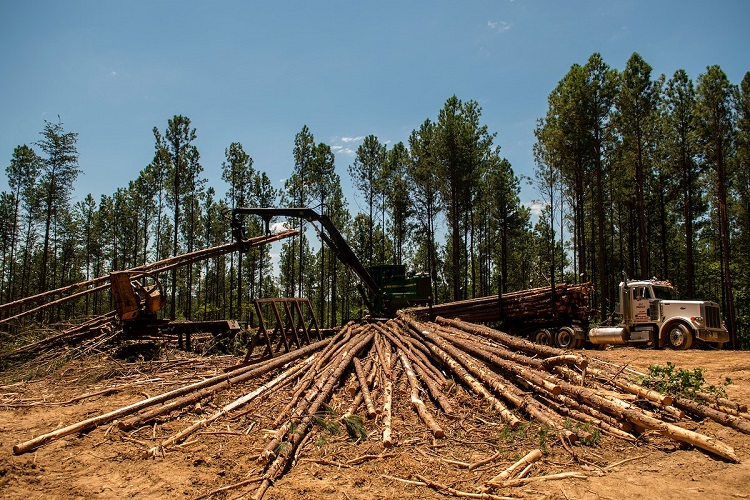Almost six million hectares have the potential to develop forestry investments in Paraguay.
The Forest Investment Viewer, recently presented by the National Forestry Institute ( Infona ) of Paraguay, showed that the country has more than 5,800,000 hectares with very high potential to develop forestry investments in Paraguay.
Based on this potential, the Government promotes the “Paraguay Forestry for the World” plan to position the industry and forest products abroad, meeting the traceability requirements to allow leveraging exports of wood products and commodities such as soybeans and meat.
This was stated by the president of Infona, Cristina Goralewski, during the Plaza Pública DENDE program, where the topic “The new star of the Paraguayan economy” was addressed. The forestry sector: analysis and reflections on its potential”, which also included the participation of Ricardo Kiriluk, director of Desarrollos Madereros, under the moderation of Yan Speranza.
Forest industry investments in Paraguay will have a traceability component
Goralewski explained that the forest traceability component is focused on compliance with the regulations and agreements between the European Union and Mercosur and will allow a demonstration of the development process that Paraguay is carrying out. He stated that today, the markets that pay more for Paraguayan forestry products are becoming more demanding regarding sustainability, regardless of the country’s regulations.
Currently, the country has 205,000 hectares of forest plantations, mainly in the Eastern Region. The manufacturing sector comprises more than 400 industries, of which more than 80% are sawmills, with Caaguazú being the area with the largest number of forestry industries.
Goralewski commented that the Forest Investment Viewer is dynamic and will be updated as new industries are installed in Paraguay, including forestry and biomass consumption.
He cited Paracel, in Concepción, which will invest USD 4 billion and represent 4% of the GDP, and Investancia, in Carmelo Peralta. While Paracel will base its production on eucalyptus, Investancia invests in pongamia, a forest species whose fruit produces biodiesel with a high nutritional component. It can also be used for the production of livestock feed.
Guarantees to finance forestry investments in Paraguay
The head of Infona pointed out the importance of having credits destined 100% to forestry production. He said that the presence of the financial system is still “timid” regarding the sector’s growth, which demands at least seven years for cellulose and biomass and ten years for solid wood. However, he announced that work is being done with the Development Financial Agency (AFD) on a Forest Guarantee Subfund to leverage credits promoting forestry investments in Paraguay.
Goralewski expressed that his challenge as head of the institution in this period is the development of the National Forest Policy, based on an already existing document, which must be updated and reviewed, not only with the forestry sector but also with the financial sector—the industrial sector, among others.
Genetic improvement
For his part, Ricardo Kiriluk pointed out that the genetics of Paraguayan forestry production are excellent and are only available in some places in the world. This is why forestry investments in Paraguay should be taken advantage of. He added that just as Paraguay exports soybeans, corn, different types of oil, and meat in large volumes, the forestry sector has to take that path to export lumber, furniture, pulp, and new related products.
He welcomed the fact that AFD and private banks are developing financing systems to facilitate forestry investments in Paraguay. However, he said that work must continue on the interest rate so that it is low and that there must also be an agile system to grant financing. He added the guarantees when the bank lends, for which they can work with insurers.
He commented that worldwide, the export business of multilaminate boards is approximately 25 million cubic meters per year, for which an offer in quality and quantity is required. In this regard, he indicated that Paraguay could take advantage of the restrictions on production with native wood that exists in some producing and consuming countries and start producing more from lumber of different types, which are inputs for furniture production.
He stated that some local industrialists are exporting furniture kits to different parts of the world. “It would be a great challenge and something very interesting. Let’s start producing wood and industrialized products locally to start building houses,” he expressed.
Meanwhile, Alberto Acosta Garbarino, head of DENDE, said that the forestry sector started very slowly, with a lot of effort, and that it will increase much more with the appearance of paper mills. He added that the financial sector is learning how this business works, with the presence of the AFD, and is beginning to finance long-term projects, with guarantees that allow this financing and suitable insurance policies that can cover the risks of cultivating this crop.
Finally, Yan Speranza indicated the need to join forces with the forestry sector to develop and strengthen financing with knowledgeable specialists who understand its dynamics.
In conclusion, the forestry sector in Paraguay stands at a pivotal juncture, poised for significant expansion and economic contribution. With over 5.8 million hectares identified for forestry investments and a strategic plan like “Paraguay Forestry for the World” in place, the country is well-positioned to capitalize on its natural resources. The emphasis on sustainability, traceability, and collaboration between government institutions, financial agencies, and industry stakeholders underscores a commitment to responsible growth. As initiatives such as the Forest Guarantee Subfund take shape and genetic improvements enhance productivity, Paraguay is primed to emerge as a critical player in the global forestry market, offering raw materials and value-added products. With continued support and strategic investment, the forestry sector is poised to become a cornerstone of Paraguay’s economic prosperity and sustainable development.
SOURCE: Agencia de Información Paraguaya

